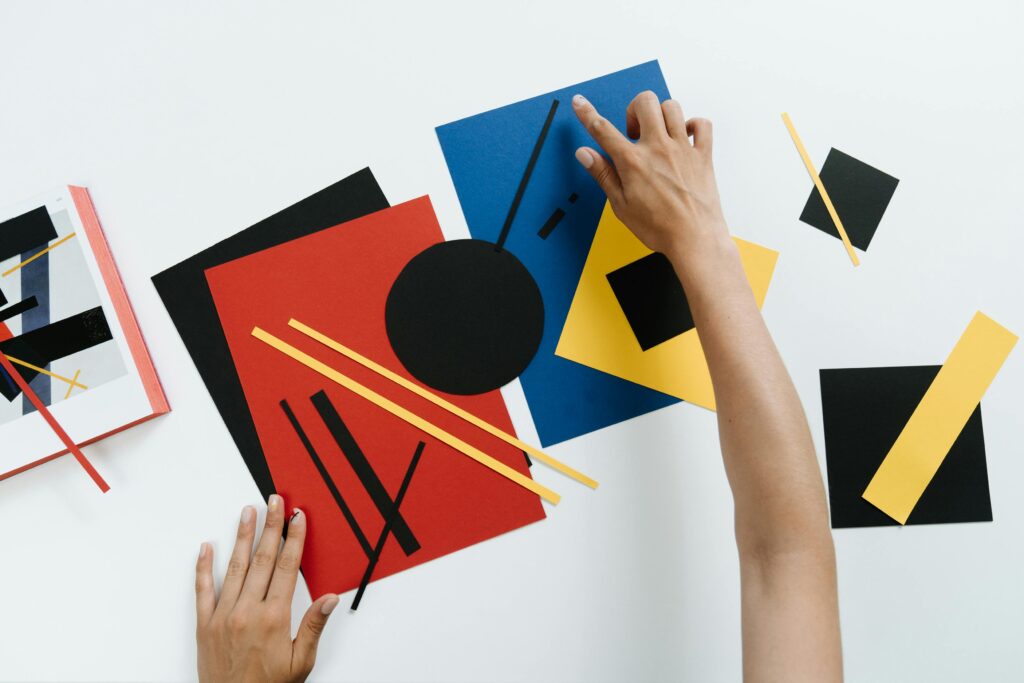
Visual Storytelling: Steering The Viewer’ Attention Through Imagery
Created By: Danielle Lesiw
As a graphic designer, one of the most powerful tools in your arsenal is the ability to control the viewer’s attention and guide their journey through your design. By thoughtfully arranging visual elements and utilizing composition techniques, you can create a narrative that captivates and communicates your message effectively. In this article, we’ll explore the art of visual storytelling and how to leverage imagery to steer the viewer’s focus.
The Power of Composition
Composition is the cornerstone of visual storytelling. By carefully arranging elements within the layout, you can direct the viewer’s eye and dictate the flow of their experience. There are a few key compositional techniques to consider:
- Rule of Thirds: Divide your frame into thirds, both horizontally and vertically, creating nine equal sections. Placing your subject along these intersecting lines or within these sections creates natural focal points and a sense of balance.
- Leading Lines: Use directional lines to help guide the viewer’s gaze toward your subject or desired point of interest.
- Framing: Create natural frames within your image using doorways, windows, or even negative space between objects to draw attention to your subject.
The Role of Hierarchy
In addition to composition, establishing a clear hierarchy within your design is crucial for effective visual storytelling. By controlling the relative size , contrast, and placement of elements, you can prioritize information and guide the viewer’s journey.
- Size and Scale: Emphasize your focal point or critical information by leveraging elements with greater size and scale, as larger components inherently command more viewer attention.
- Contrast: High-contrast elements stand out against their surroundings, making them ideal for creating focal points or emphasizing specific areas.
- Placement: Strategic placement of elements can create a visual path for the viewer to follow, leading them through your narrative.
The Importance of White Space
White space, or negative space, is often overlooked but plays a vital role in visual storytelling. By strategically incorporating space around your subjects or focal points, you create a sense of balance and allow the viewer’s eye to rest. This prevents the viewer being visually overwhelmed.
- Emphasis: White space can be used to isolate and emphasize specific elements making them stand out and command attention.
- Flow: Careful use of white space can guide the viewer’s eye through your design, creating a natural flow and rhythm.
- Hierarchy: White space can also be used to establish a hierarchy, separating and prioritizing different sections or elements within your design.
Conclusion
Visual storytelling is a powerful tool that allows designers to engage and captivate their audience. By mastering the principles of composition, hierarchy, and white space, you can create designs that are not only aesthetically pleasing but also effectively communicate your message. Visual storytelling taps into the human psyche, eliciting emotions and reactions from the viewer. Through carefully curated visuals, designers have the ability to transport their audience on a captivating voyage, one that resonates on a profound level. By skillfully manipulating elements such as color, texture, and imagery, a skilled visual storyteller can evoke specific emotions further enhancing the overall narrative. Remember, the goal is to guide the viewer’s journey, steering their attention and creating a narrative that leaves a lasting impression.
This article was created by the author with assistance from AI.
